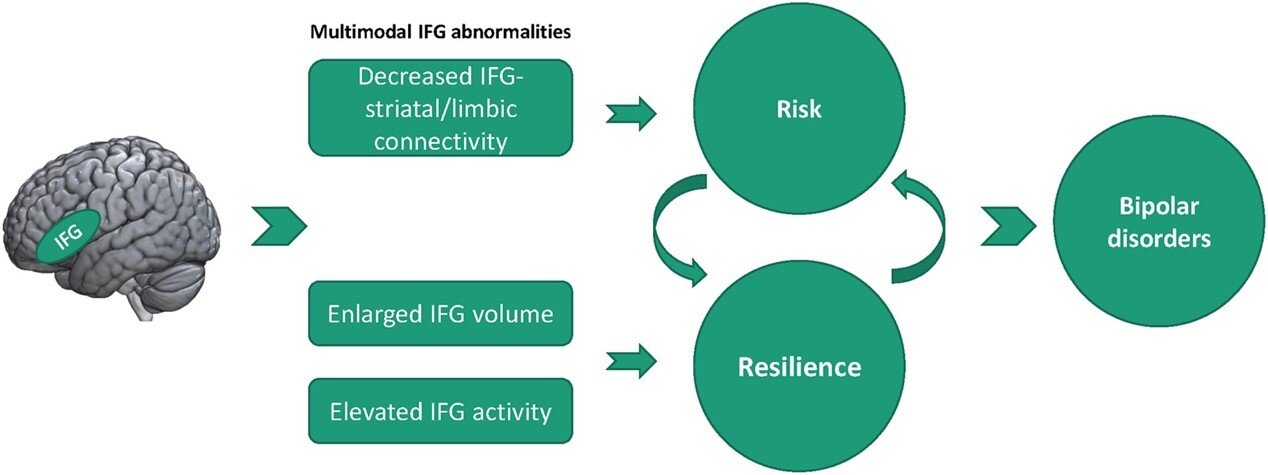
Globally, bipolar illness provides substantial societal and economic issues since it is characterized by recurring manic and depressed episodes. BD is a high-risk illness for those with family history, with first-degree relatives having an average heritability of about 75%.n
the newly developed discipline of “psychoradiology,” which is centered on the brain’s processes. As a result, the IFG has been identified as a possible biomarker of genetic susceptibility to BD. The IFG, a part of the brain involved in emotional and cognitive control, has frequently been connected to BD-risk factors. Notably, brain abnormalities can be present in people who are at risk but who maintain good mental health, indicating the presence of risk and resilience elements.n
The review, published in Psychoradiology, was conducted by researchers from West China Hospital of Sichuan University and University of Cincinnati College of Medicine. This review summarizes studies using magnetic resonance imaging (MRI) to assess multimodal IFG abnormalities in individuals with a familial risk for BD. The review suggests that these alterations may contribute to behavioral deficits, such as impulsivity, mood instability, inattention, and cognitive dysfunction.n
The review highlights that at-risk individuals exhibit larger gray matter volume and increased functional activities in the IFG compared to their low-risk counterparts. This may be an adaptive brain response that aids emotional regulation, potentially acting as a resilience factor. However, the same at-risk individuals also exhibited diminished functional connectivity between the IFG and areas crucial for cognitive and emotional control, such as the limbic system or the striatum—a risk-associated concern.n
Despite these advancements, significant inconsistencies remain across the findings, reflecting the need for more robust and systematic studies. The role of the IFG in genetic vulnerability for BD is becoming more apparent, but comprehension of this relationship is still in the early stages. To further understand the IFG’s role in BD risk, large-scale, longitudinal studies that employ advanced imaging techniques are required.
More information:
Kun Qin et al, The inferior frontal gyrus and familial risk for bipolar disorder, Psychoradiology (2022). DOI: 10.1093/psyrad/kkac022
Provided by
West China Hospital of Sichuan University
This document is subject to copyright. Apart from any fair dealing for the purpose of private study or research, no
part may be reproduced without the written permission. The content is provided for information purposes only.n
